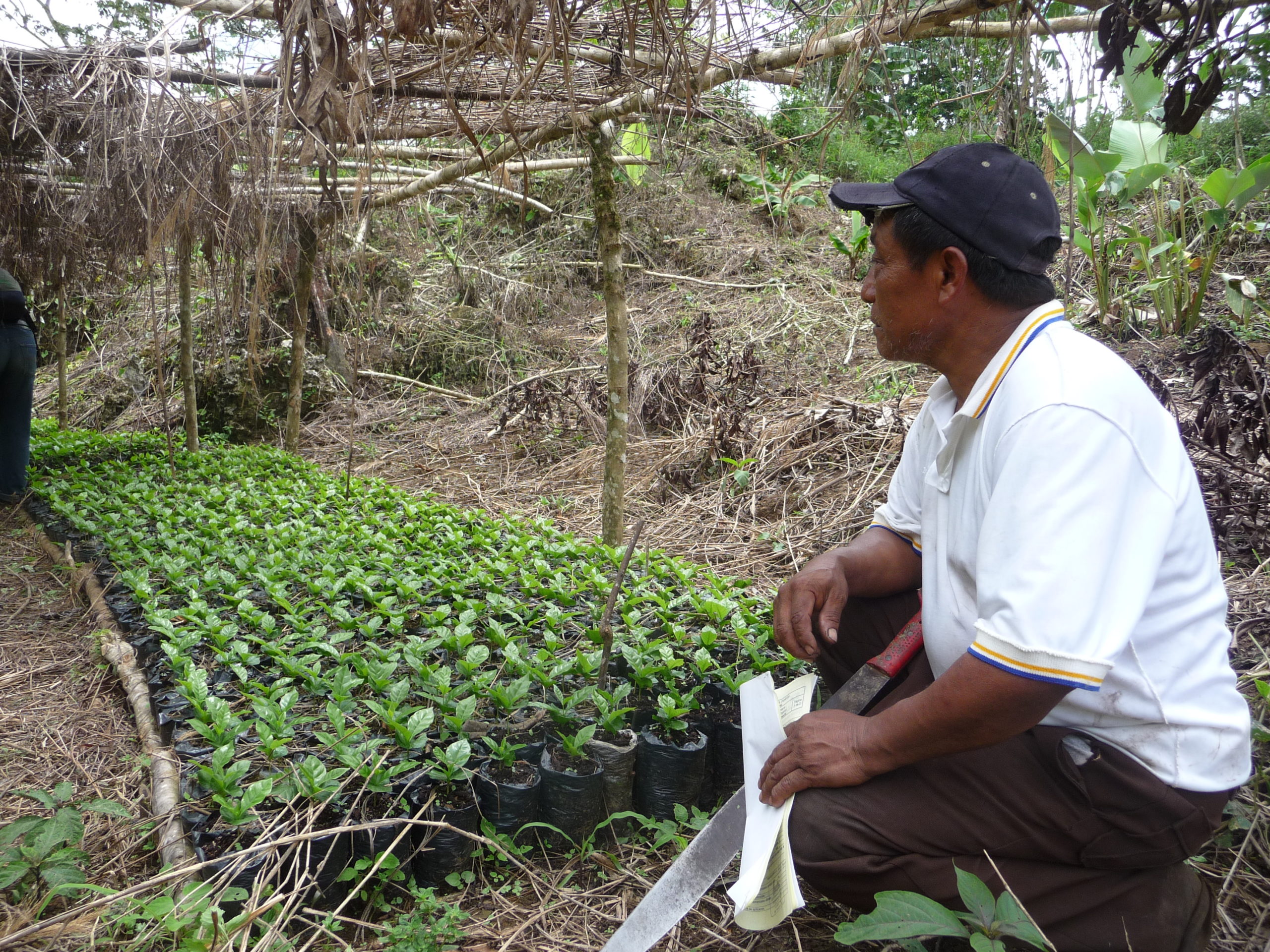
Smallholder farmers across the world are on the frontlines of the climate crisis, with rising temperatures, droughts and floods, and severe storms threatening their livelihoods. Through our Climate Resilience Initiative, Root Capital connects agricultural enterprises with urgently needed resources, including localized data on climate risks, best practices for mitigation and adaptation and capital for climate-smart investments. We recently sat down with Elizabeth Teague, Director of the Climate Resilience Initiative, to get an update on this critical work.
1. What is the Climate Resilience Roadmap and why did Root Capital create it?
I’ll start with the why: We launched our climate strategy-the Climate Resilience Roadmap-because we saw the existential threat posed by climate change to agricultural communities around the globe, especially to our clients and their communities in the Global South. We know it’s impossible to achieve our mission of rural prosperity without addressing the climate crisis. So, in 2020, we launched the Climate Resilience Roadmap, our plan for providing agricultural enterprises with the information, management skills and capital needed to build resilience to climate change. When we talk about smallholder farmers being on the “frontlines” of climate change, we don’t just mean that they are disproportionately vulnerable to these impacts-though that’s true! Farmers and agricultural enterprises are also positioned to be leaders of climate action. But they need the right resources. And that’s what we’ve outlined in our Climate Resilience Roadmap: a pathway to provide training and financing to agricultural businesses to spark and sustain climate action at scale.
2. Tell me about the role of smallholder farmers and agricultural enterprises in advancing climate action.
Rural communities are important stewards of natural resources across the globe, including some of the world’s remaining biodiversity hotspots. Unlike industrial agriculture, most smallholder farmers use low-carbon farming practices that don’t contribute to the climate crisis. Many, especially coffee and cocoa farmers, actually help fight climate change through practices like agroforestry (farming with trees) that conserve important amounts of carbon in their land. The biggest challenge for farmers comes on the adaptation and resilience side-how do they invest in their farms to prepare for the future climate? This is where Root Capital’s model of supporting local agricultural enterprises can have the most impact. These businesses are rooted within local communities and invested in local needs for the long term. They provide farmers with access to critical training, inputs and support services that can build climate resilience. Individually, each farmer-allied business impacts the lives of hundreds, thousands or even tens of thousands of farmers. Collectively, they serve as a distributed platform for grassroots and timely climate action. But they need support.
3. Only 1.7% of climate capital goes to small-scale agriculture. How is Root Capital approaching climate finance for agricultural enterprises and what have you learned so far?
For decades, Root Capital has worked to close the agricultural finance gap-now we’re doing the same for climate finance. Ultimately, we’re trying to direct resources to those best prepared to lead the world into a greener future. Agricultural enterprises can take steps to reduce their own emissions and help farmers adopt climate-smart practices-but most need training and financing to get started. Over the last two years, we have piloted new climate finance products focused on business infrastructure (e.g., solar) and on-farm investments (e.g., soil regeneration). Through relatively small investments, enterprises can transition to renewable energy and help farmers build the health and resilience of their soil.

We’ve disbursed over $1.3 million in climate loans and grants since 2020. We’re proud of that achievement, but we also recognize that it’s a drop in the bucket compared to the need, even just within our portfolio. We’ve been reflecting on lessons learned and working to fine-tune our strategies based on our clients’ feedback. For instance, we’ve learned that even when we offer climate loans to our clients, many are reluctant to commit to these investments because they don’t necessarily generate additional revenue in the short term. To make these climate investments more attractive, we plan to introduce preferential pricing to reduce the cost for our clients. Basically, we want to remove barriers preventing enterprises from investing more in climate action.
4. Since women are disproportionately impacted by climate change, what is Root Capital doing to strengthen the climate resilience of women farmers?
Women farmers generally start out on an uneven playing field and climate change can exacerbate these inequalities. Women tend to have less access to land, training and inputs compared to men, often resulting in lower yields; they may also have less time to devote to farming because of childcare and household expectations. Through our climate advisory services, Root Capital looks at women’s disproportionate vulnerability to climate change (for example, do women tend to have farms at lower altitudes, which are more threatened by rising temperatures?) and assesses their specific adaptation and resilience needs. And through our gender equity advisory, we help agricultural enterprises identify opportunities to elevate women’s leadership and participation, with the goal of getting more women at the table and in decision-making roles. We have also piloted efforts to simultaneously address gender equity and climate change-and an evaluation showed improvements both in women’s knowledge of climate-smart practices and their opportunity to participate in business-level decision making. This clearly demonstrates that women’s inclusion and climate resilience can and should go hand-in-hand.
5. What are you most looking forward to in 2023?
This year, I’m looking forward to getting more climate action finance out the door to rural communities to invest in climate resilience. We also have a few exciting new initiatives. One is that we’re working with several partners to identify carbon payment models, such as carbon offsets, better tailored to the needs of smallholder farmers. We’re also expanding the reach of our climate advisory services, launching a digital extension advisory service for macadamia farmers in Kenya and offering our first climate advisory services in Indonesia, which is home to extremely important and biodiverse ecosystems. There’s a tremendous amount of work to be done, but we’re feeling optimistic about the road ahead and have the utmost faith in our clients’ abilities to take full advantage of this moment.
To stay up-to-date on Root Capital’s Climate Resilient Roadmap and other work, sign up for our email list.

What do you think?